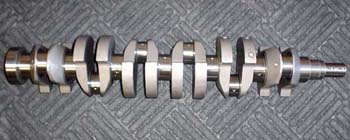Quote:
Still, you'll never see even a radically prepared 500 CI big block spin faster than a very pedestrian 50cc engine.
Not true. NHRA 500 ci Pro Stock motors regularly spin 10 grand, and you rarely see an engine failure.
The 632 Donovan we did at the race car shop turned 8000+.

